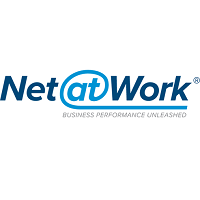
Click here for ways to listen offline and at 2x speed
Click here to listen to this episode on YouTube
Location: Dallas, Texas
Transcript
Tim 0:01
Welcome to another AUG Blog Audio Post, located at AUGForums.com. You can find this specific audio post at AUGForums.com/AudioPost7. This is your host, Tim Rodman, coming to you live on Monday, January 27 2020, from Las Vegas, Nevada, where we are at Acumatica Summit 2020. In this audio post, I’m talking to my good friend, Stuart Blumenthal. Stuart, I’ll let you introduce yourself and what you do.
Stuart 0:37
Thank you, Tim. Hi, I’m Stuart Blumenthal, the Acumatica practice director and Net at Work, and I’ve been in this industry for way too long. I started off about 30 years ago doing Sage and now Acumatica over the years. Both are great products.
Tim 1:00
I’ve corresponded with Stuart because we both come from our beloved MAS 500, or formerly MAS 500. Now, I don’t know what it is. Sage 500? Sage 500 ERP, without the ERP? But we both come from that background. We corresponded a lot about BI before Acumatica. I think we first met at Acumatica Summit 2016 in Orlando and I think this is your first time back to a Summit. You were out of the Acumatica channel, now you’re back in. So I’m curious, first of all, to get your perspective on what’s changed since you were last here in Orlando.
Stuart 1:39
Gosh, size has probably doubled easily in terms of both customers as well as partners and a lot more third party apps out there. They’ve really done a nice job of really getting, you know, a lot of the popular ISVs that are in products like Sage and the Microsoft world into Acumatica, they’ve done a great job of that. And, in addition to that, getting a lot of newer partners that brought on a lot more clients.
Tim 2:12
And names you recognize now more too right, on the partner front?
Stuart 2:17
It’s actually in some ways, I hate to say it like this, it’s actually a kind of a mini Sage reunion. But it’s good, you know, I think they got the right partners into the channel. And they’ve really done an amazing job of finding the right partners in here and getting a good group. Also, the scale has changed tremendously. You can see they’re making the investment, not just in the product, but in the partners and in the venues here. You know, we’re at an amazing hotel.
Tim 2:43
Yeah, this is pretty fancy, the Cosmopolitan hotel in Las Vegas. We’re about to walk into this fancy theater in 30 minutes to hear the first keynote. And, yeah, it’s definitely fancier than Orlando right?
Stuart 2:56
They’ve upped their game and taken it to the next level. It’ll be great. Hopefully, as this growth continues, they stay with the partner channel and they keep the customers and the partners focused. Hopefully they’ll continue to do that. For now, they’ve done a great job.
Tim 3:14
I agree. So one thing we were talking about over breakfast is Business Intelligence. I think we have a similar view on how we see Acumatica fitting in at a company. I’m curious, to kick off your thoughts with, when you go into a company looking at Acumatica, I think you have a slightly different view than, I don’t know if it’s fair to say than most, but, yeah, give us your take on how you see Acumatica plugging in for a company?
Stuart 3:43
That’s a great question. You know, for me, it’s more about making sure the product fits within their organization. Acumatica does not need to replace every single component within the system. Acumatica is, you know, great from an Accounting and Distribution standpoint. And it’s obviously got things like Manufacturing and Field Service. But, in all essence, I think we try too many times to replace all systems, trying to be everything. Instead, we can take a product like Acumatica and tie it into other solutions. I always believe in having that engineering / architect approach. How do we bridge Acumatica with other solutions? We’re just finishing up a really cool implementation. This company has information coming in from all these different places. From bus driver numbers, the number of hours they’ve been driving, to where they’re sales came from. To me, those are systems we can’t replace.
Tim 4:47
Were these homegrown systems or some official third party supported software systems?
Stuart 4:54
These are a combination of everything.
Tim 4:57
Excel might be another piece in there?
Stuart 4:59
There was a good old SQL database in there somewhere, but not using FoxPro anymore thankfully. As a result, we’re trying to get all that information in so we can do some really cool reporting out of the system using attributes. But, in the end, how do we really tie the systems together? To me, it’s not about just replacing the system. It’s about integrating the system with everything else. You know, even Acumatica states in their PowerPoints that they want to become the system of record. But to me, it’s more about integration system of record than anything else.
Tim 5:47
At the end of the day, the graveyard of every transaction is the Accounting transaction. That, to me, is what I think of when I think of a system of record. Are you thinking mainly accounting when you say system of record? Or, maybe, you go a little bit further up? You’re just not necessarily going all the way up, as far operationally as some people who try to sell the system as being all things to all people?
Stuart 6:14
I think you hit the nail on the head there. It really kind of depends. Sometimes it’s always going to be the Accounting system of record. But, you know, it depends upon how much reconciliation you want to do with the other 3rd party products. We’re working with a project right now. We’re going to be tying their inventory system to Acumatica. Could Acumatica do part of the inventory? The answer is yes. But Acumatica can’t do the complete depth of what they need. So let us be the accounting, let us be the inventory master file, let us do the quantities, but that’s about it. Let’s not go to the extent that we have to do everything. We can do all the certifications and do all the quality stuff, but they’re using industry specific products. So, in the end, the question is, when you do these types of things, where does the reconciliation occur? And how much reconciliation do you want to do between the two products? You have to make sure that two products stay in line with each other. And that’s always important.
Tim 7:09
So you use Acumatica where it makes sense, but you don’t blindly think the entire business has to run on Acumatica. And that works well, I think, because of Acumatica’s strong APIs right? You can have a pretty tight integration to these other systems. It’s not necessarily the old manual moving data at night. You can have pretty tight integration because of the strong APIs. Do you agree?
Stuart 7:32
With the APIs? Yes, 100%. Or you can do the cheap way and do import scenarios.
Tim 7:37
That’s true. That’s the duct tape integration. And it works.
Stuart 7:41
It depends upon the budget you have. Or you can start off with the duct tape and then move it up to API.
Tim 7:50
I like that, 80/20 rule right there. I think that fits well too with your BI, or Business Intelligence, philosophy in that, even if all the data is not living in Acumatica. Maybe from a system of record standpoint it is, but there could be ancillary data that’s still living in an outside system. That fits perfectly into a BI philosophy, right, where you come over the top of all the systems with still one common reporting engine. Does that fit well?
Stuart 8:19
Exactly, that’s 100% correct. Acumatica’s reporting is awesome. But if you need to have that “over the top” layer on top, there are some great products out there that you can bring the data right into. Too many people sell the dashboards and sell, “hey, we can do everything in the system.” There might be a third party reporting tool that pulls information in from multiple sources and that becomes the overall reporting tool. Acumatica is supposed to be a really amazing cog, and it’s not supposed to be the cog. It’s supposed to be a cog within the organization that makes it more valuable and unleashes the power of our client’s business.
Tim 9:02
I like that. I also like the point that, even with import scenarios, that you might start off with that as an acceptable way to go live. Then you can slowly let Acumatica grow into the organization, little by little, as it’s making sense. You might have a business line that you’re not doing a lot with now so it doesn’t make sense to invest a lot in it. But, as it grows, it might make sense to even code that piece into Acumatica if that’s what’s needed. Kind of an organic growing of the product into the organization when it makes sense.
Stuart 9:37
Exactly. If we really get down to it, the problem is that people spend all their money in year one and they think they’re going to end in year one with their Acumatica cash flow expenditures. If we do it strategically, because, as I joke around, our clients are not banks and we don’t have endless resources. I would love to have three or four more consultants right now, but we’ve got to balance those two things out between their cash flow and our resources. In the end, planning on year one doing it this way. Year two, let’s automate some of these processes. It’s that crawl, walk, run approach. Let’s let them at least learn how to walk before we run. If you API everything immediately, you have to make sure that you have the right safety valves in there.
Tim 10:30
From the reconciliation standpoint right?
Stuart 10:32
Exactly.
Tim 10:32
Ya, that makes sense, I like that. I like your approach to coming into a prospect. I think everyone has a different style, how they come in, and I like your approach, especially how we have a similar way of thinking on the Business Intelligence side.
Stuart 10:53
It’s amazing what you can do. It’s funny, 10 years ago, if someone were to ask me to integrate all these systems together, I would have said, great, ya, pull out your checkbook. Nowadays, it’s gotten a lot easier. Especially with web services, APIs, all that. Gosh, it’s an amazing time to be in this area and I think that a lot of people, unfortunately, they’re so focused on just the Acumatica piece, but not the overall entire ecosystem of our clients.
Tim 11:27
Well, hey, Stuart, thanks for jumping on an Audio Post with me. You’re my second victim by the way and you understand the two rules: no editing and publish immediately. So I appreciate you being brave enough to jump on and give it a shot. So thanks.
Stuart 11:41
You’re very welcome.
Tim 11:42
It’s good to see you again after Orlando four years ago. And I guess we see a lot of people walking into the keynote so we’ll wrap it up here and I hope you have a good time at the rest of the Summit.
Stuart 11:53
Thank you.
Tim 11:54
Well, that’s it for now. Thanks for listening. And I’ll catch you on the next AUG Blog Audio Post. Take care.

